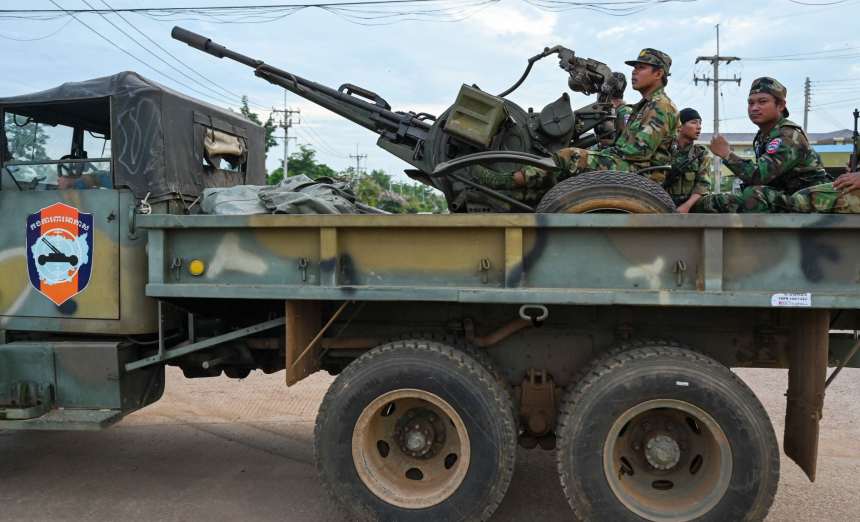New Ceasefire Takes Effect, But Tensions Flare
Thailand and Cambodia agreed to an immediate and unconditional ceasefire, effective at midnight local time on July 28, following five days of intense border fighting—the deadliest clash in over a decade that displaced over 300,000 people and killed at least 38, mostly civilians.
However, within hours of the ceasefire’s start, Thailand’s army alleged that Cambodian troops launched attacks in at least five locations along the disputed border, prompting Thai forces to respond in “proportionate self-defense”.
Accusations and Denials
Thai army spokesman Major General Winthai Suvaree accused Cambodia of deliberately violating the agreement to undermine mutual trust:
At the time the agreement took effect… Cambodian forces had launched armed attacks into several areas within Thai territory.
Cambodia’s Defence Ministry, however, firmly denied the claims, stating that its troops have fully honored the ceasefire with no incidents since it began at midnight
Military Talks Delayed Amid Mistrust
The ceasefire agreement outlined that military leaders from both sides would meet early Tuesday morning to formalize the truce and coordinate implementation. Though talks were scheduled at 7 a.m., Thailand later postponed one such meeting to 10 a.m., citing ongoing tensions.
Despite the delay, both sides pledged to maintain the truce by halting troop movements and facilitating the return of wounded and deceased individuals. Coordinating committees are set to resolve further issues.
Calm Returns, Civilians Begin Resettlement
By Tuesday, signs of calm were emerging: Thai border towns in Sisaket began reopening, and displaced residents cautiously returned to resume daily life. Still, emotions remain fragile, and confidence in lasting peace is tentative.
Stakes and Why It Matters
As Thailand and Cambodia navigate their tense resolution, international actors—including ASEAN, the U.S., and China—remain deeply invested. Former U.S. President Donald Trump had earlier linked the border conflict with trade negotiations, warning of possible 36% tariffs on exports from both countries unless hostilities ceased by August.
The ceasefire’s durability now hinges on successful military coordination, clear communication, and the ability to address underlying border disputes. Analysts caution the peace is precarious and easily destabilized by even minor breaches.
What Lies Ahead
- Continued military-level negotiations, including planned meetings on August 4 under ASEAN guidance, aim to cement cooperation and trust.
- International observers from the U.S., China, and Malaysia may be deployed to monitor compliance with the ceasefire.
- Civilians will likely resume returns in small waves; humanitarian groups emphasize the need for safe access and civilian protection.
Final Take
Thailand’s accusation of ceasefire violations underscores the fragility of the newly declared truce with Cambodia. While the agreement offers a ray of hope for displaced communities and economic recovery, the early allegations highlight lingering mistrust. Whether diplomacy can prevail over entrenched territorial disputes will determine if peace holds—or unravels again along this volatile frontier.










